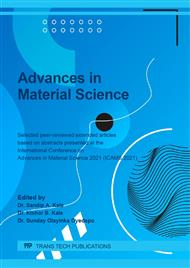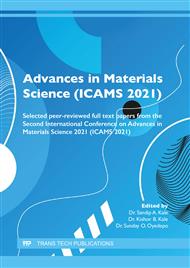p.3
p.15
p.21
p.29
p.35
p.43
p.53
p.61
Re-Engineering Plastic Waste for the Modification of Bitumen Blends
Abstract:
The increase in the production and utilization of plastics has created a never-ending problem of plastic waste. Developing countries face challenges with plastic waste disposal that in due process negatively impacts the environmental ecosystem. That notwithstanding, it suffices to mention that most developing countries have poor road networks that pose a burden towards smooth economic and social development. The problem is further exacerbated by the limited availability of bitumen which is usually imported but also has environmental concerns. It is against this background that we proposed alternative binders from plastic waste which can help developing countries to manage plastic waste as well as build road networks, thereby leading to sustainable development. We explored the 80/100 penetration grade bitumen modification (Penetration grade 85 and Softening temperature 46°C) using polyethylene terephthalate (PET) waste (2 – 12%) and lignin (0.2%) as a crosslinking agent by weight for every PET waste – Bitumen sample. The research showed that Plastic waste and lignin improved the performance of bitumen. The modified bitumen with 10% waste PET and 0.2% lignin enhanced the softening point and penetration points to 55°C and 46, respectively; hence the incorporation of PET and lignin provided better properties compared to the neat bitumen.
Info:
Periodical:
Pages:
15-19
Citation:
Online since:
August 2022
Authors:
Price:
Сopyright:
© 2022 Trans Tech Publications Ltd. All Rights Reserved
Share:
Citation:



